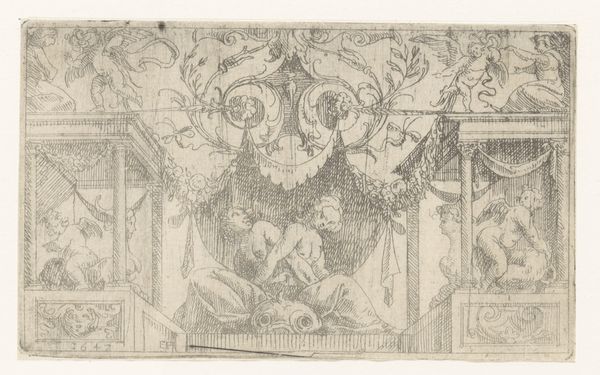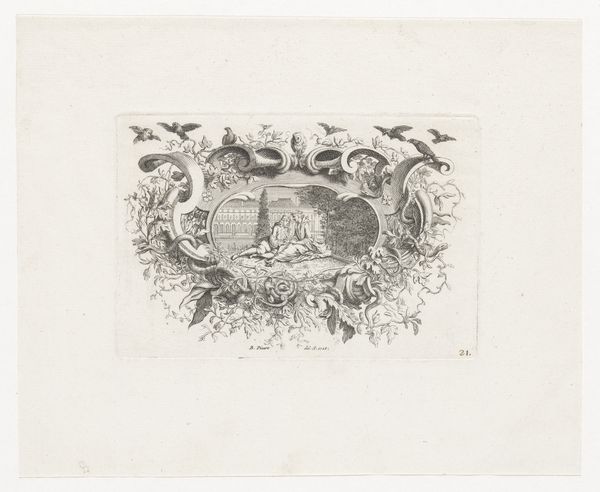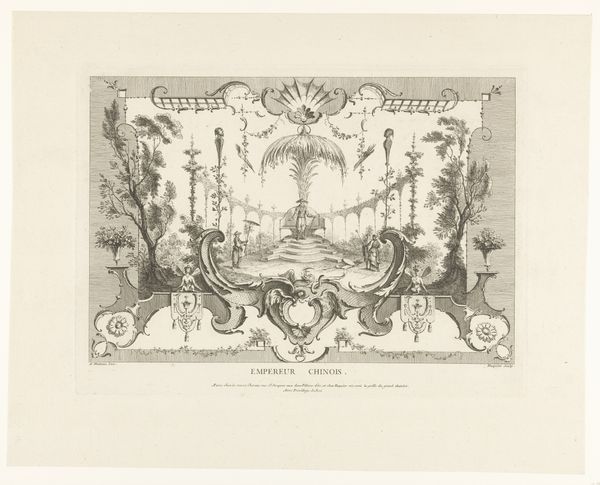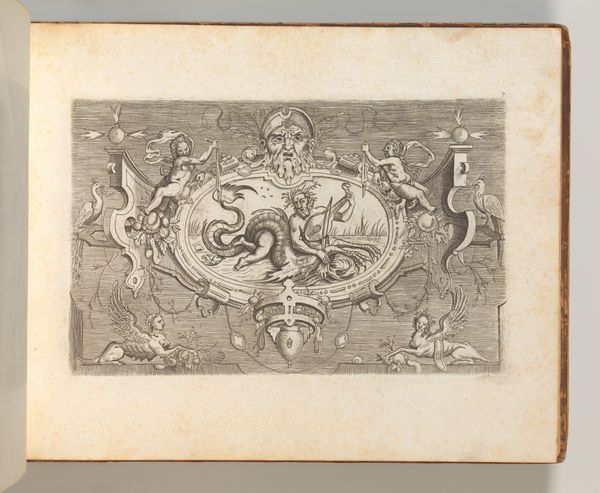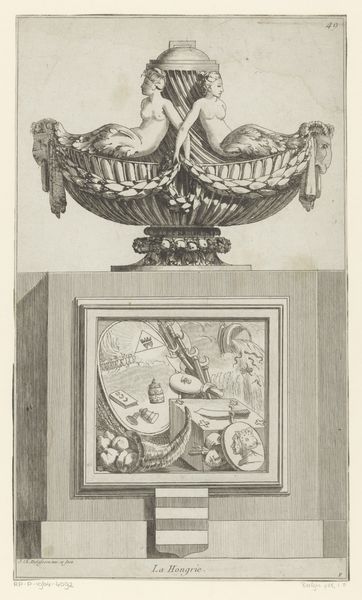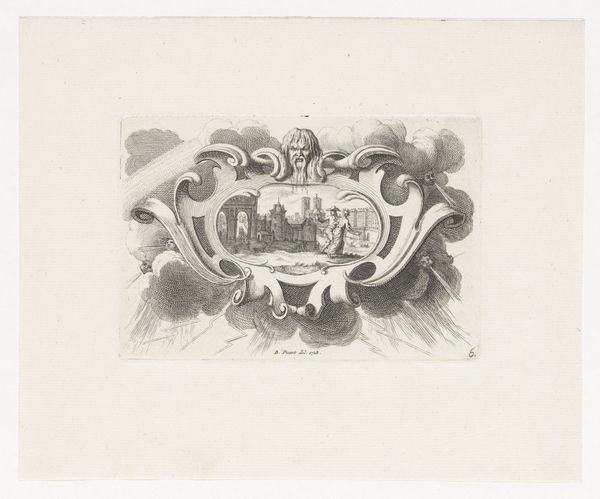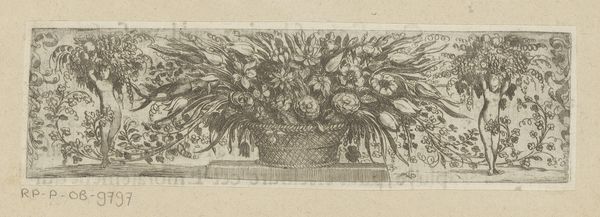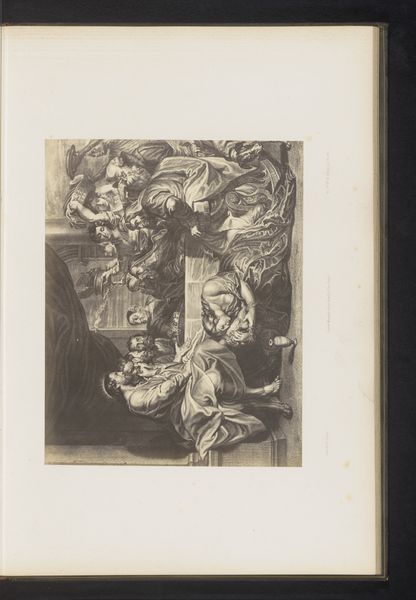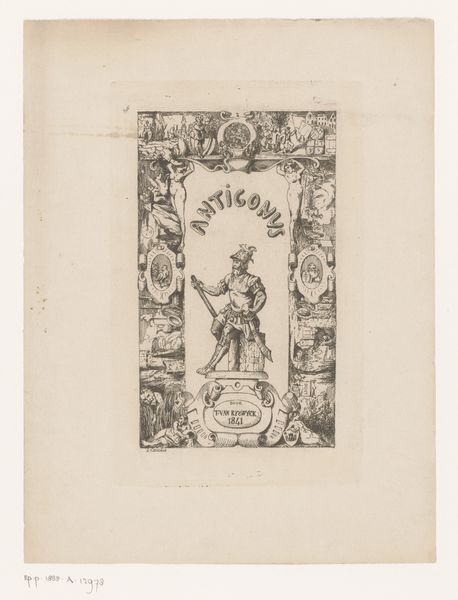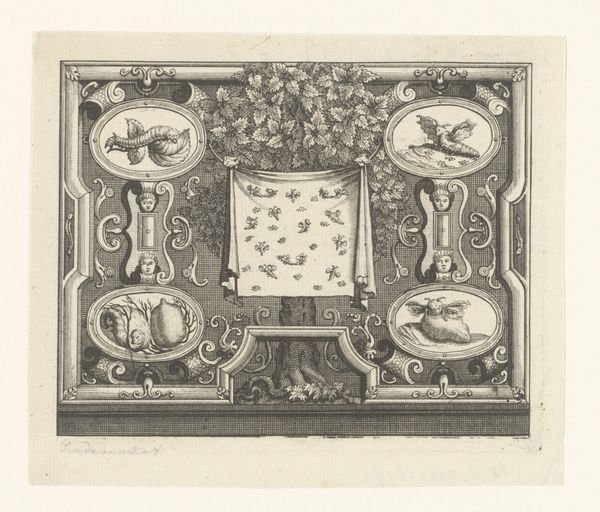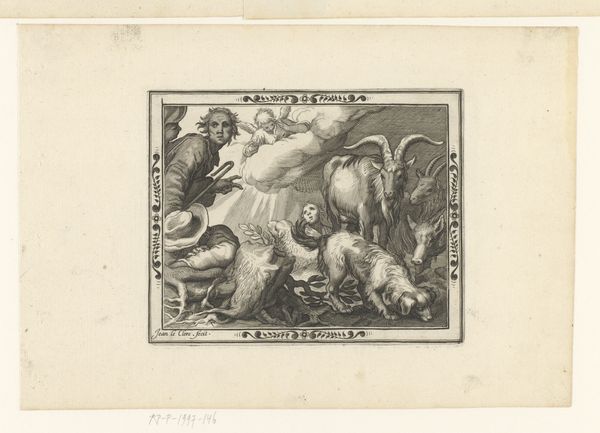
#
photo of handprinted image
#
aged paper
#
toned paper
#
light pencil work
#
pale palette
#
ink paper printed
#
old engraving style
#
personal sketchbook
#
sketchbook drawing
#
cartoon carciture
Dimensions: height 84 mm, width 165 mm
Copyright: Rijks Museum: Open Domain
This is Sébastien Leclerc's “Vignet met wereldbol en wapenschild van Frankrijk,” an engraving, made sometime between the late 17th and early 18th century. Created during a period of French expansion and colonial ambition, Leclerc's work reflects the era's nationalistic pride. The central shield, adorned with the fleur-de-lis and topped with a crown, symbolizes the power of the French monarchy. Flanking this are allegorical figures, appearing to be women, who recline amidst globes and weaponry, representing France's global reach and military strength. But what does it mean to cast women as symbols of imperial power? How does this representation both uphold and complicate notions of gender, nation, and authority? These women are passive, they are reclining. Are they in possession of this power, or are they merely symbolic of it? Consider how Leclerc’s vignette doesn’t just depict France's dominance, but also actively participates in constructing and reinforcing it, both for its contemporaries and for us today.
Comments
No comments
Be the first to comment and join the conversation on the ultimate creative platform.
